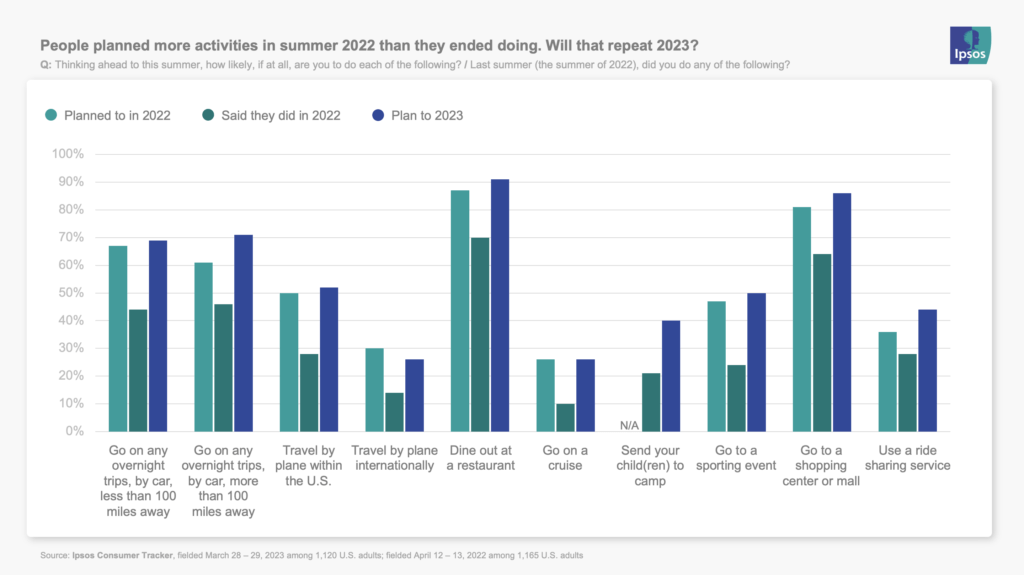Experienced market researchers know that asking about future behaviors in surveys is tricky. For many reasons, there is a big difference between what people say they will do and what they actually do. Anyone with a teenager will back me up on this; statements such as “I’ll clean my room tomorrow” or “I’ll walk the dog after dinner” may be well-intentioned, but are no guarantee of task completion.
In Research Rockstar’s questionnaire design courses (Questionnaire Design 101 and 201), we teach lessons on the challenge of measuring future behavior in detail. Briefly, future behaviors can be very hard for people to report accurately, even if they intend to do so. The challenge for survey researchers is that the gap between planned and actual behavior can vary (by topic, population, or even due to question wording). Ideally, the researcher would get to survey the same population twice: once to measure the planned behavior of interest and again later to measure if the planned behavior occurred. Alas, few researchers have the opportunity to actually measure the gap between planned and actual behaviors. So when I spotted an example (and visualization!), courtesy of Ipsos, I wanted to share it. The figure compares data collected in 2022 and 2023 on the topic of summer activities.

Source: Ipsos Consumer Tracker, fielded March 28-29, 2023 among 1,1,20 U.S. adults; fielded April 12-13, 2022 among 1,165 U.S. adults
Here we see that the spring 2022 survey found that 50% planned to travel by plane domestically in the summer of 2022. But the 2023 survey found that less than 30% actually did so. That’s quite the gap!
So, what contributes to such a difference between self-reported planned and actual behavior? There are many reasons but a few key ones are social desirability bias, the general tendency to overestimate planned actions (“Yes, I plan to start exercising….tomorrow!”, as covered in our Behavioral Economics course), and the influence of context (plans change, priorities shift). You would be hard-pressed to find anyone who successfully executes 100% of their planned behavior.
What people say they will do in surveys may not always align with their actual behavior in real life. Sometimes that’s fine; for a given research study we may be more interested in intent than behavior (intent can still indicate being an appropriate target for marketing messages). But in some cases, we really are trying to get a gauge on future behaviors. In these cases, we have to word our survey questions and answer options carefully to make it easy for survey participants to give us responses that are more likely to align with reality.
Here’s one example of how question wording can help: when asking about future behaviors, choose a specific and reasonable timeframe. For example, if you are asking about the likelihood of visiting a specific city, specifying “within the next 3 months” will likely get a more accurate answer than specifying “within the next 12 months.” The percentages will be lower, but the gap between the planned behavior and actual behaviors will also be smaller. The timeframe suitability varies by the purchased item’s price tag or importance.
Even with fantastic question wording and answer options, measuring future behaviors is hard. Still, it is better than guessing at likely future behaviors. As market research professionals we do what we can, and we are also forthright when reporting such results to state any caveats about their limitations.












